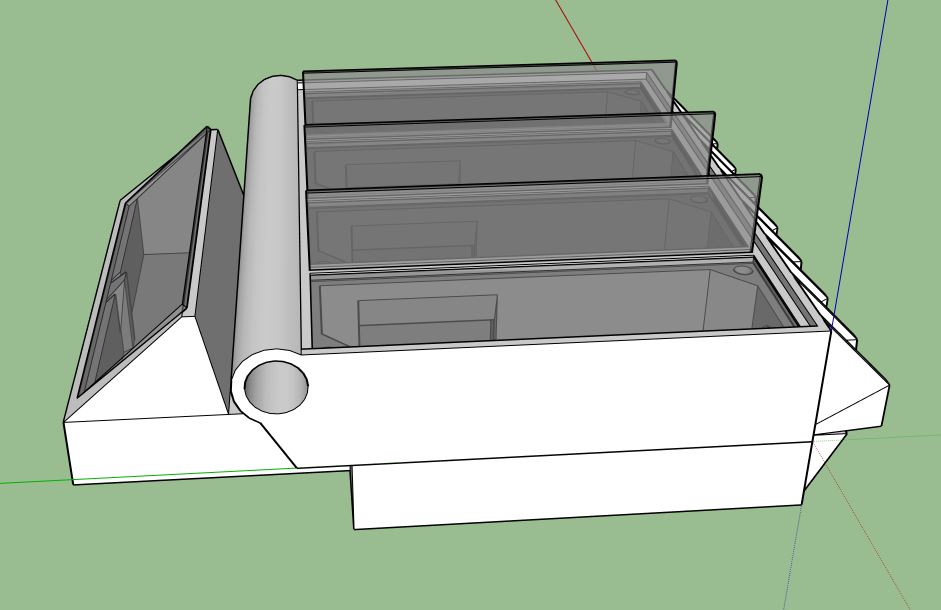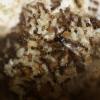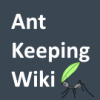- Formiculture.com
- Forums
- Gallery
- Members
- Member Map
- Chat

31 replies to this topic
#21
 Offline
-
Posted September 2 2015 - 5:08 PM
Offline
-
Posted September 2 2015 - 5:08 PM
I haven't flushed out the design of the chambers yet. I don't think I'll actually work on that until I've first tried an initial prototype. I've acquired a digital hygrometer probe for testing the humidity, but I'm not quite sure what the target value is, and I'm sure that it's different between species. I'll probably add some spacers again to control the humidity levels.
~Dan
#22
 Offline
-
Posted September 10 2015 - 11:22 AM
Offline
-
Posted September 10 2015 - 11:22 AM
With the completion of my latest model, I think I'm ready to test some prototypes. This will likely take a few revisions since these things never work right out-of-the-box.
Since I don't immediately own a 3D printer, I devised an interesting work-around for the time being; does anyone here already have a 3D printer and would like to be a guinea pig?
~Dan
~Dan
#23
 Offline
-
Posted September 14 2015 - 6:33 PM
Offline
-
Posted September 14 2015 - 6:33 PM
Dan, I would volunteer, but that print would be resource intensive and would not print correctly on my printer. Prints above 15mm with large walls would warp and fail on my printer. I have mitigated it to some extent, but I don't want to test this out if it is large. Is it an stl file? And what are the dimensions? What might work is to start small, and then print out larger versions to see when it fails.
#24
 Offline
-
Posted September 15 2015 - 8:22 AM
Offline
-
Posted September 15 2015 - 8:22 AM
Dan, I would volunteer, but that print would be resource intensive and would not print correctly on my printer. Prints above 15mm with large walls would warp and fail on my printer. I have mitigated it to some extent, but I don't want to test this out if it is large. Is it an stl file? And what are the dimensions? What might work is to start small, and then print out larger versions to see when it fails.
Hey Hutch. Thanks very much for your interest and your offer. Fortunately, someone else has already come forward via private message and offered to try out my design (but more folks are welcome to as well). This is probably good since printing smaller versions would not work, and I wouldn't want to cause you any printer-grief. But to answer your question directly, there are two big pieces to print, each is roughly 5x5x1 inch.
Edited by Works4TheGood, September 15 2015 - 8:23 AM.
~Dan
#25
 Offline
-
Posted October 13 2015 - 6:25 PM
Offline
-
Posted October 13 2015 - 6:25 PM
I'm contemplating how to ventilate this/my formicarium design. Is there anything more to ventilation beyond giving the ants some fresh air to breath? I've heard that it also helps to keep mold under control, but that sounds like a side effect of reducing the humidity, which formicariums are supposed to have a LOT of. Ventilation, for that reason, would almost seem like a necessary evil since hydration is so vitally important. And yet, how is mold kept in check? Just how much of an enemy is mold? Do the ants make any attempt to control it themselves?
I am really inexperienced in this area. Do you folks have any wisdom to share with me?
I am really inexperienced in this area. Do you folks have any wisdom to share with me?
~Dan
#26
 Offline
-
Posted October 13 2015 - 7:23 PM
Offline
-
Posted October 13 2015 - 7:23 PM
Ventilation was not a primary focus in my earlier formicarium models, and consequently, stagnant air had an adverse effect.
When commonly found aerobic bacteria and other organisms grow in a confined, poorly-ventilated area, first they release carbon dioxide. After oxygen levels become depleted, anaerobic bacteria take over to produce acids and other toxins that are even more harmful to ants.
You will need to balance certain sections of the nest that release, or at least confine, humidity, and other areas where air is more free to flow. Replicating a subterranean environment with non-porous plastics is challenging, but not impossible.
- Works4TheGood likes this
byFormica® is the manufacturer of the iconic nectar feeders and Sunburst Ant Nectar.
byFormica ant products always deliver consistent performance, convenience,
and reliability, making them among the most beloved ant foods and kit enjoyed by
ant keeping enthusiasts worldwide. For more information, visit www.byFormica.com.
#27
 Offline
-
Posted October 13 2015 - 9:15 PM
Offline
-
Posted October 13 2015 - 9:15 PM
I don't think ventilation is much of a problem unless the formicarium is air tight, and I think as long as the nest medium is not a a material that promotes mold growth, there should be no problems. In my experience, mold is not a problem.
I had green mold growing in one of my camponotus Pennsylvanicus colonies. In fact, the mold grew on a live worker during hibernation. I filmed a worker balling up the mold and carrying it to somewhere else inside the formicarium. The video is on youtube. The moldy worker was alive and cleaned off and went back to work.
So, in this specific case, the mold did not appear harmful, but at least undesirable for the worker. However,the ants took care of it.
My largest current colony, Crematogastor Cerasi, is thriving in a unventilated hydrostone formicarium with a big black and brown moldy spot. This colony keeps growing. I had a huge tetramorium colony that got too big. That was in 3 connected unventilated formicariums.
I have also had other colonies fail for unknown reasons...
I think mold is kind of a bogemon, feared but unnecessarily so.
I had green mold growing in one of my camponotus Pennsylvanicus colonies. In fact, the mold grew on a live worker during hibernation. I filmed a worker balling up the mold and carrying it to somewhere else inside the formicarium. The video is on youtube. The moldy worker was alive and cleaned off and went back to work.
So, in this specific case, the mold did not appear harmful, but at least undesirable for the worker. However,the ants took care of it.
My largest current colony, Crematogastor Cerasi, is thriving in a unventilated hydrostone formicarium with a big black and brown moldy spot. This colony keeps growing. I had a huge tetramorium colony that got too big. That was in 3 connected unventilated formicariums.
I have also had other colonies fail for unknown reasons...
I think mold is kind of a bogemon, feared but unnecessarily so.
- Foogoo likes this
#28
 Offline
-
Posted October 1 2016 - 8:05 AM
Offline
-
Posted October 1 2016 - 8:05 AM
I've been asked by several people about what happened to this effort, and so I felt that I should probably give a public update to anyone who's curious.
Although my first post was over a year ago, the R&D on this formicarium design is still very much alive and active. Although, the design itself has changed substantially to the point that it's unrecognizable from the original pictures.
I might also add that I've selected a partner who has been invaluable in progressing the design since it was first envisioned. Thanks Russ!!!
I'm sorry to say that the release has been delayed for at least a year or two mostly because of printer-related problems, the turn-around time between experiments, and the need for hibernating your ants for a season. However, as I said, this remains a highly active project and is projected to reach completion eventually.
Our formicarium is not expected to compete with current vendors because our design has fewer requirements. We want something that works and allows us to see the ants; nothing more. It doesn't matter to us if it looks like a battered starship instead of a picture frame, or if it looks like an ugly warehouse instead of a palace. It'll never be something that you put on your mantel. It'll never be something you hang on your wall or something that you invite your friends over to see. It'll be ugly, but it'll get the job done and done well!
Unfortunately, the details of the design will likely remain private until it's officially released.
~Dan
#29
 Offline
-
Posted September 18 2017 - 8:11 PM
Offline
-
Posted September 18 2017 - 8:11 PM
For the place where you put in the water to hydrate the nest, are there holes. I was thinking about 3D printing my nest and do you know the size the hole should be for a camponotus colony
#30
 Offline
-
Posted September 19 2017 - 5:37 AM
Offline
-
Posted September 19 2017 - 5:37 AM
CoolEV304872,
My design has evolved radically since it's original conception. It looks nothing like the original pictures. Now, to hydrate my printed nests, I have a lid that I simply remove and replace.
I have a Camponotus pennsylvanicus colony, and I use 3/8 tubing. In all honesty, it's too small. They need something bigger. But then again, these ants are about as large as ants get in the USA.
It took a long time before I finally felt comfortable putting colonies in my printed design. It took years for me to get everything right: humidity, temperature, & ventilation. I still plan on releasing this design publicly and for free, but I'm not quite ready yet. My partner lost interest in the development and so now it's just me, but things are very close.
You might trying the formicariums available on Thingiverse.com. However, I have some reservations in using Thingiverse, as some of the designs appear to be cheap knock-offs of designs by venders who have invested a lot of R&D into the real McCoy.
~Dan
#31
 Offline
-
Posted September 19 2017 - 8:40 AM
Offline
-
Posted September 19 2017 - 8:40 AM
CoolEV304872,
My design has evolved radically since it's original conception. It looks nothing like the original pictures. Now, to hydrate my printed nests, I have a lid that I simply remove and replace.
I have a Camponotus pennsylvanicus colony, and I use 3/8 tubing. In all honesty, it's too small. They need something bigger. But then again, these ants are about as large as ants get in the USA.
It took a long time before I finally felt comfortable putting colonies in my printed design. It took years for me to get everything right: humidity, temperature, & ventilation. I still plan on releasing this design publicly and for free, but I'm not quite ready yet. My partner lost interest in the development and so now it's just me, but things are very close.
You might trying the formicariums available on Thingiverse.com. However, I have some reservations in using Thingiverse, as some of the designs appear to be cheap knock-offs of designs by venders who have invested a lot of R&D into the real McCoy.
Highly interested in the design, why not release it in beta/alpha state onto thingiverse?
> Ant Keeping Wiki is back up! Currently being migrated from old wiki.  Looking to adopt out: Crematogaster sp. (Acrobat Ants) colonies
Looking to adopt out: Crematogaster sp. (Acrobat Ants) colonies
#32
 Offline
-
Posted September 19 2017 - 3:01 PM
Offline
-
Posted September 19 2017 - 3:01 PM
It will eventually be hosted from my own website and include an entire suite of printable ant-keeping equipment. The website is the hold up. Frankly, I don't feel like working on it right now. Also, I wouldn't mind testing it with a few more species of ants before the public tears it apart and dismisses it prior to it gaining traction. We'll see.
~Dan
Also tagged with one or more of these keywords: formicarium
Market Place →
General Market Place →
FormiFactory's Nest ShopStarted by FormiFactory , Dec 8 2025 |
|

|
||
Market Place →
General Market Place →
Possible THA Formicarium for sale in ArizonaStarted by sacs4010 , Aug 20 2025 |
|

|
||
Market Place →
General Market Place →
Temnothorax's Formicarium StopStarted by Temno , Jun 30 2025 |
|

|
||
Ant Keeping →
General Ant Keeping →
A Nest IdeaStarted by cooIboyJ , Mar 22 2025 |
|

|
||
Market Place →
General Market Place →
Trade: 3D-Printing Service for your Queens/Colonies (Los Angeles, CA)Started by JonathanH , Mar 4 2025 |
|

|
1 user(s) are reading this topic
0 members, 1 guests, 0 anonymous users
















